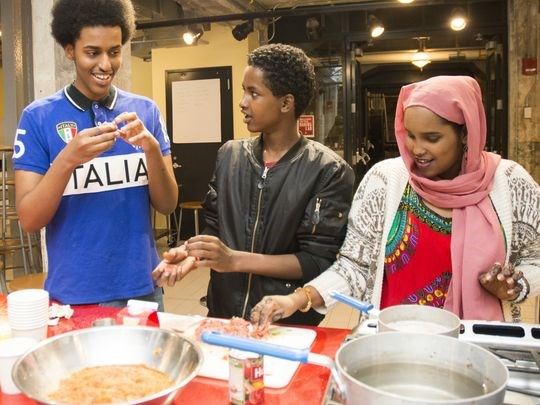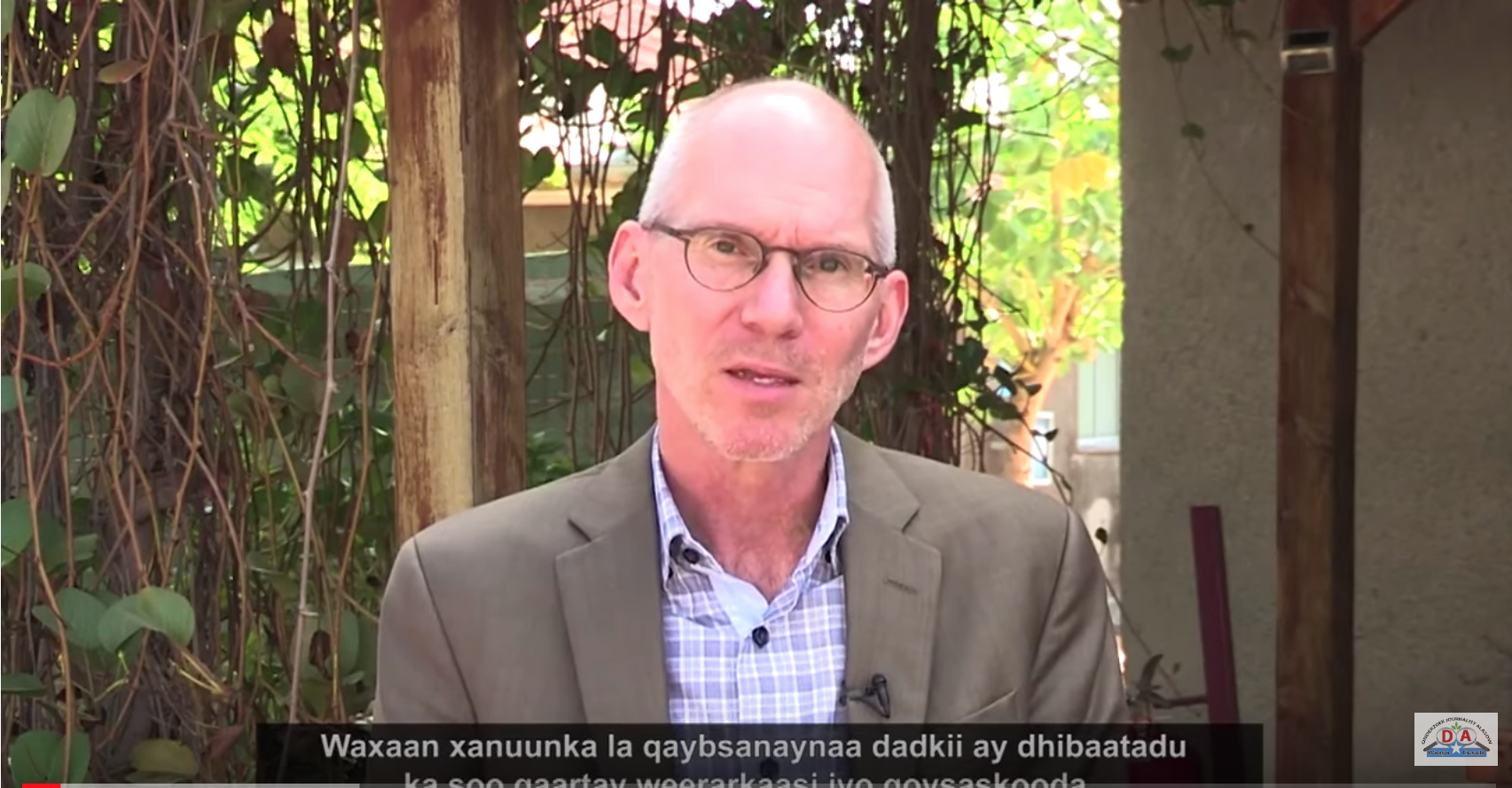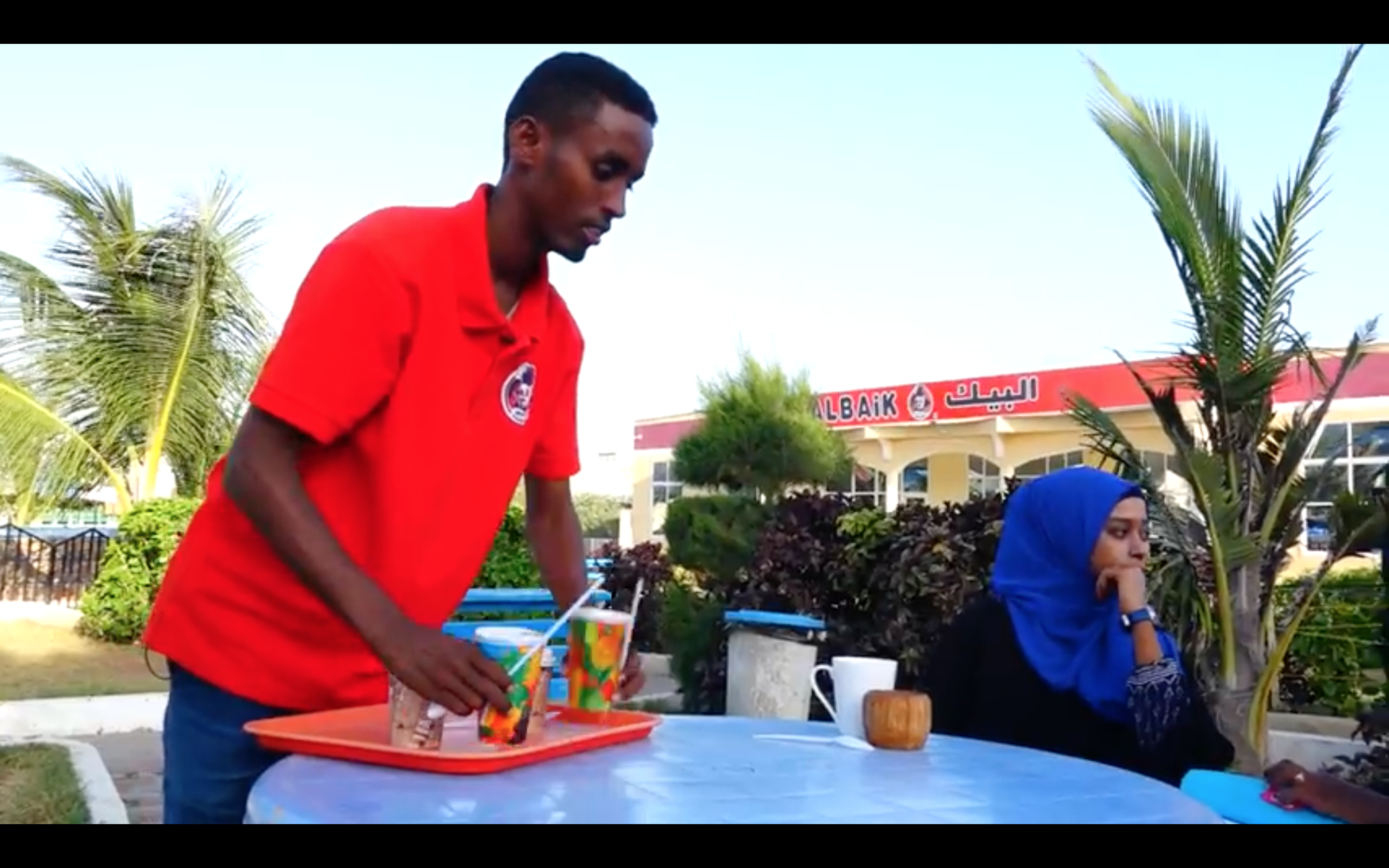
New Somali exhibit shows 4,000 years of history and daily life — in Somalia and Minnesota
"The camel is an important symbol in my family," said Mohamed, a student at Metropolitan State University.
But like many young Somalis in Minnesota, he hadn't seen much to reflect that heritage as photos and family relics were scarce, left behind or destroyed in the journey to the United States.
Now those stories are coming into focus through photos, artifacts and even a full-sized nomadic home at the Minnesota History Center's "Somalis + Minnesota" exhibit, which was to open Saturday. It's the first long-term exhibit about the East African nation's culture, heritage and diaspora at the state's history museum.
The historic photos of the people and the landscape are the most moving, said Mohamed, an intern hired by the Minnesota Historical Society to help recruit volunteers for the exhibit.
"I am amazed," Mohamed said. "The second generation born here is not aware of all this history."
Minnesota is home to the largest Somali population in the United States — 57,000 people, according to the census, though the actual number is believed to be much higher.

The young men and women of the Somali Museum Dance Troupe study and perform traditional dances from all regions of Somalia. The dancers are high school and college students passionate about sharing their culture. They perform throughout the United States. The "Somalis + Minnesota" exhibit opens June 23, 2018 at the Minnesota History Center. (Photo: Mustafa Ali)
"With Somali people in almost every sector of Minnesota's workforce, now is the time to celebrate the strength and resilience of the Somali people and to help build bridges in understanding what it means to be an immigrant," said Steve Elliott, the historical society director and CEO in a statement.
The 2,400-square-foot exhibit was designed in partnership with The Somali Museum of Minnesota and features poetry, photography, oral histories and murals by local Somali artists.
Osman Ali, the Somali Museum's executive director, helped procure many of the exhibit's more dramatic artifacts directly from Somalia, including the nomadic dwelling called an aqal Soomaali and a loom used to weave cotton threads into vibrant, striped cloth.
"We are pleased that thousands of visitors to the Minnesota Historical Society will come and look at the exhibit and know about our culture and heritage," Ali said.
Emphasis on daily life
The exhibit focuses on culture and daily life of the Somali people and is designed for a broad audience: Somalis with memories of their homeland, their American-born children and Minnesotans who are intrigued by their neighbors' history and culture.
"There is a lot of mystery around the Somali people and their culture," said Amal Mohamed, the Somali Museum's marketing manager. "Now people will feel more welcome to come and ask questions."

This is an aqal soomaali (AH-kahl so-MAH-lee), a portable house used by Somali nomadic families. It is made to be taken apart, loaded on a camel’s back, then rebuilt in a new place. An aqal Soomaali will be featured in In "Somalis + Minnesota," an exhibit opening June 23, 2018 at the Minnesota History Center. The house was purchased from a family living in northeast Somalia in 2017. (Photo: Ahmed Hussein Ahmed)
The exhibit is an overview of 4,000 years of history starting with prehistoric cave paintings and continuing through the country's bustling trade ports celebrated in early writings of European and Arab traders. It explores nomadic and agricultural lifestyles raising sheep, goats and camels and growing bananas and other fruit.
It brings visitors to the present day with a room featuring stories of about 100 Somali Minnesotans ranging from doctors and police officers to teachers and small business owners. It briefly explores women's relationship with the hijab, the prominence of tea in the culture and why many Somalis decided to make Minnesota home.
The exhibit also touches on Somali political history — colonization by England, France and Italy and the civil war that erupted in 1991 that resulted in many people fleeing the country.

"Soo Fariista/Come Sit Down: A Somali American Cookbook” features traditional Somali family recipes with a modern Minnesota twist. The cookbook was authored by Somali high school students who participated in the Minnesota Historical Society program "Wariyaa: Somali Youth in Museums” in 2016. Students interviewed family members, collected recipes and stories, researched techniques and ingredients and tested recipes at the Mill City Museum Baking Lab. The "Somalis + Minnesota" exhibit opens June 23, 2018 at the Minnesota History Center. (Photo: Andrea Reed, Minnesota Historical Society)
Kate Roberts, an exhibit developer at the Minnesota History Center, said they were careful to ensure the exhibit would not traumatize visitors with memories of the war. She said they're also committed to having Somalis tell their own stories and history.
"Our goal is to always have a Somali speaker in this exhibit," Roberts said. "If people walk away wanting to visit a Somali restaurant, wanting to try some tea or just engage the next Somali they meet in a longer conversation, we will feel like we've met one of our important goals."
Leave a comment
| Copyright © 2009 - 2026 Sunatimes News Agency All Rights Reserved. |
| Home | About Us | Diinta | Reports | Latest News | Featured Items | Articles | Suna Radio | Suna TV | Contact Us |
 0
0 









New Somali exhibit shows 4,000 years of history and daily life — in Somalia and Minnesota
Luqman Mohamed grew up hearing his grandfather's stories of the nomadic life in Somalia, of family members loading their possessions onto the backs of camels and moving frequently in search of water.